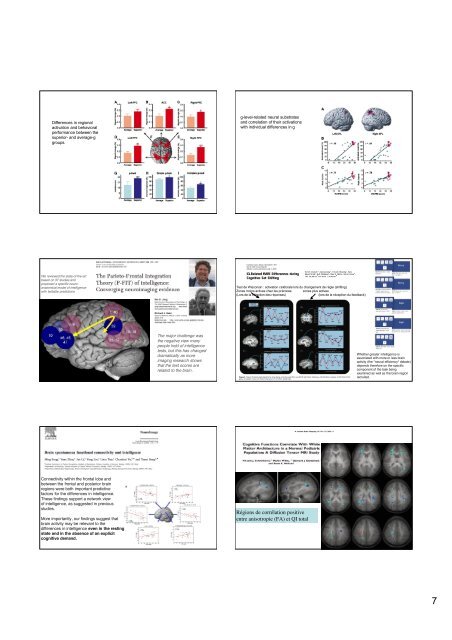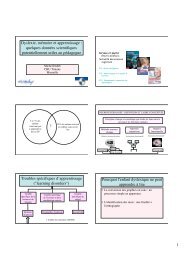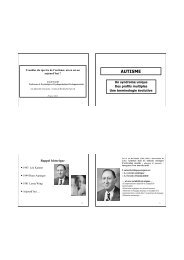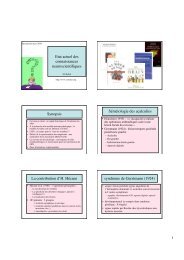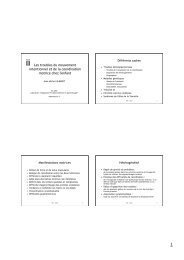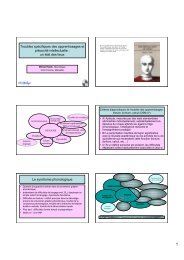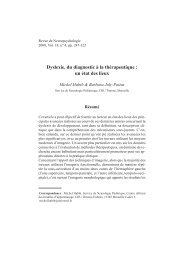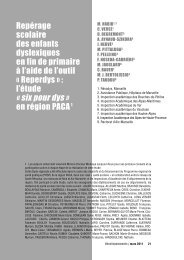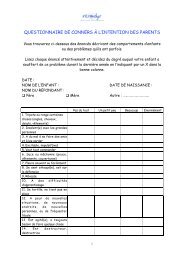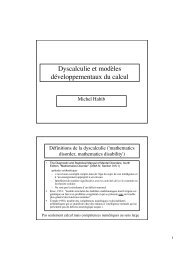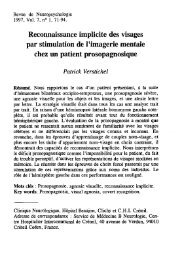1 Caractéristiques communes aux syndromes "dys" - Resodys
1 Caractéristiques communes aux syndromes "dys" - Resodys
1 Caractéristiques communes aux syndromes "dys" - Resodys
Create successful ePaper yourself
Turn your PDF publications into a flip-book with our unique Google optimized e-Paper software.
Differences in regionalactivation and behavioralperformance between thesuperior- and average-ggroups.g-level-related neural substratesand correlation of their activationswith individual differences in gWe reviewed the state-of-the-artbased on 37 studies andproposed a specific neuroanatomicalmodel of intelligencewith testable predictionsTest de Wisconsin : activation cérébrale lors du changement de règle (shifting)Zones moins actives chez les précoces zones plus actives(Lors de la sélection des réponses)(lors de la réception du feedback)The major challenge wasthe negative view manypeople held of intelligencetests, but this has changeddramatically as moreimaging research showsthat the test scores arerelated to the brain.Whether greater intelligence isassociated with more or less brainactivity (the "neural efficiency" debate)depends therefore on the specificcomponent of the task beingexamined as well as the brain regionrecruited.Connectivity within the frontal lobe andbetween the frontal and posterior brainregions were both important predictivefactors for the differences in intelligence.These findings support a network viewof intelligence, as suggested in previousstudies.More importantly, our findings suggest thatbrain activity may be relevant to thedifferences in intelligence even in the restingstate and in the absence of an explicitcognitive demand.Régions de corrélation positiveentre anisotropie (FA) et QI total7


